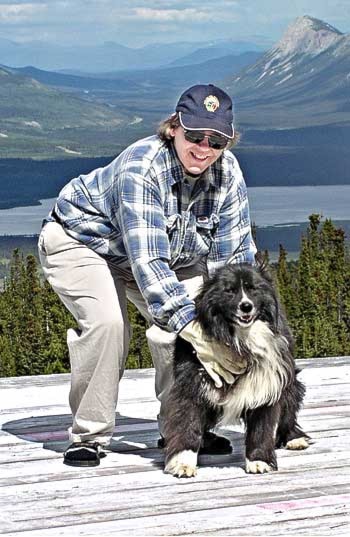Retired empty-nesters aren’t the only ones downsizing their homes these days.
Just ask Laird Herbert. He’s building a house for himself that’s only slightly bigger than a garden shed.
Yet the house will have all the amenities - a kitchen with stove and sink, a bathroom with shower and toilet, a living room and a loft bedroom.
Earlier this month, Herbert was hard at work on his new home.
He had finished putting in the plumbing.
Built on the back of a trailer for easy transport, the home is currently parked in the downtown industrial area.
From outside, it looks like a shed on wheels, covered in aluminum siding.
Inside, the place is cozy with lots of wood that makes it feel almost like a sauna.
There’s a giant window, which Herbert was able to salvage and use for free, and plenty of light.
He gives the grand tour of the place. It takes about five minutes.
“I really like living in small places; it forces you to simplify,” said Herbert.
“I don’t have a lot of places to put things, so I’m going to have to get rid of a lot of stuff before I move in, which is awesome.”
Herbert has been living in the Yukon for a couple years, off and on, and has always found it difficult to find a place to rent.
Once you do find a place, rent can be expensive.
So he decided to build a little place of his own.
He got the idea from some friends in Victoria, a pair of architects who are building their own miniature home.
But it turns out that the mini-home movement has been happening from some time now.
One of its leading advocates is Jay Shafer, a California man who has been designing and building pint-sized places since 1997.
That’s when he built his first home, an 89-square-foot bungalow on wheels, which he named Tumbleweed.
He started the Tumbleweed Tiny House Company shortly thereafter, building homes for others, many of them smaller than some people’s closets.
Shafer builds homes from 65 to 837 square feet.
Herbert is near the bottom of this range - his pad is about 150 square feet if you include the loft.
He started building in December and plans to be finished and moved in by Canada Day.
The project has dragged on for six months because Herbert works full time at a group home and only works on his days off.
Plus, Herbert isn’t the most experienced builder.
He points out that the walls are a bit crooked (you can’t really tell).
And he says that he often ends up doing some things two or three times before he gets them right.
He got the interior wood paneling up and looking good before realizing that he’d have to take it down again to put in the electrical wiring.
The work was done and the wall was restored before Herbert remembered that he also had to put in plumbing.
The place is insulated and, in theory, should be able to make it through a Yukon winter.
The tiny house is heated with an equally tiny gas heater, the type that are meant to be used in boats.
The home will be off the grid, and Herbert plans to install solar panels on the roof and maybe even a little wind turbine.
He hopes this will be enough to run a small fan, his computer and the little LED lights, which will illuminate the place and should be pretty low power.
He plans to haul water to his home by bicycle, but there’s also a built-in hook-up to run water into the sink and shower.
The shower isn’t spacious but definitely doesn’t look uncomfortable.
Even so, it’s so small that Herbert had to have it built specifically to fit.
He has a solar shower that he plans to use in the summer and a tank-less hot water heater for showers in the winter.
The plumbing isn’t too intricate and will drain into a bucket below the floor.
“I don’t know how that’s going to work in the winter but we’ll figure that out.”
There will also be a living wall,
a verticle garden, which Herbert plans to plant soon to brighten up the place and help regulate humidity in the small space.
And there is storage space and shelving in every available nook and cranny.
In the end, the home will have cost Herbert all of his savings, but he hopes to be able to sell the place if and when he leaves the territory again.
“I kind of want to build another one actually,” he said.
“I learned a lot and I think I’d do it a lot differently next time.”
Herbert has received a number of offers for spots to park his new abode, but doesn’t want to say where this might be.
“I think the city may come after me because there’s zoning bylaws about parking RVs and technically it’s an RV,” he said.
“Maybe not. If they do it’ll be a fun battle.”
Contact Chris Oke at
chriso@yukon-news.com
